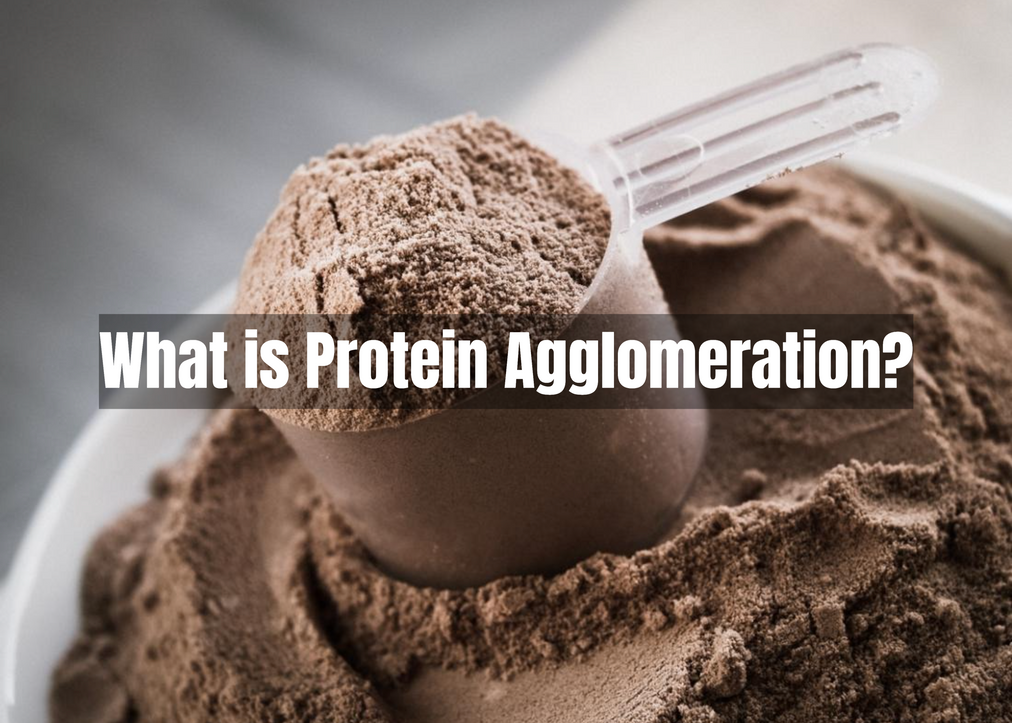Posted by Kaha Nutrition on 7th Jun 2024
Protein Agglomeration: Unlocking the Potential of Whey Protein Powders
As the fitness industry continues to grow, the demand for protein powders has skyrocketed. Among the various types of protein powders available in the market, whey protein has emerged as a popular choice for its impressive amino acid profile and numerous health benefits. A key innovation in whey protein manufacturing has been the introduction of protein agglomeration, which aims to improve the overall quality and performance of protein powders. In this article, we will explore what protein agglomeration is, its benefits, and other protein powders that use this process.
What is Protein Agglomeration?
Protein agglomeration is a process where protein particles are intentionally clustered together to form larger particles. This is typically achieved through the use of high shear mixers, fluid bed systems, or spray drying. The primary goal of protein agglomeration is to enhance the functional properties of the protein powder by improving solubility, dispersibility, and texture. The result is a more consistent and enjoyable protein supplement experience for consumers.
Benefits of Protein Agglomeration
- Improved Solubility: Agglomerated protein powders exhibit better solubility, allowing them to dissolve more easily in liquids. This is especially beneficial for those who consume their protein supplements as shakes or smoothies, as it prevents the formation of lumps and creates a smooth, easy-to-mix product.
- Enhanced Dispersibility: The larger particle size of agglomerated proteins helps to prevent the formation of dust during mixing, reducing the likelihood of clumps and improving the overall consistency of the final product.
- Better Texture: Agglomerated protein powders tend to have a more pleasant mouthfeel due to their improved solubility and dispersibility. This makes them a more appealing choice for consumers who may be sensitive to the texture of their protein supplements.
- Increased Stability: The agglomeration process can help to protect sensitive proteins from denaturation due to heat, pH changes, or mechanical stress during manufacturing and storage. This ensures that the protein powder maintains its nutritional value and functional properties for longer periods.
- Enhanced Absorption: Some research suggests that agglomerated protein powders may be more easily digested and absorbed by the body, potentially increasing the bioavailability of the amino acids and nutrients contained within.
Other Protein Powders that Use Agglomeration
Although whey protein is the most well-known agglomerated protein powder, several other types of protein also undergo the agglomeration process to enhance their functional properties. These include:
- Soy Protein: Agglomeration is commonly applied to soy protein to improve its solubility and reduce its beany taste, making it a more appealing option for those seeking a plant-based protein source.
- Plant Protein: Agglomeration of plant protein helps to improve its texture and mouthfeel, as well as enhancing its dispersibility in liquids, making it easier to incorporate into various recipes and beverages.
- Casein Protein: Like whey, casein is a milk-derived protein. Agglomerating casein protein can improve its solubility and make it more convenient for consumers to mix and consume.
Protein agglomeration has revolutionized the protein supplement industry by improving the functional properties of protein powders, particularly whey protein. Agglomerated protein powders offer numerous benefits such as improved solubility, dispersibility, texture, stability, and potentially enhanced absorption. With agglomeration being used in various protein powders, including soy, pea, and casein proteins, consumers have a variety of high-quality options to meet their nutritional and fitness needs.

